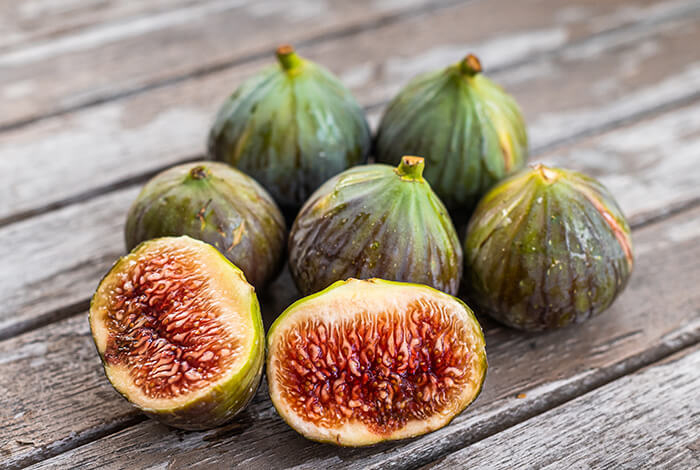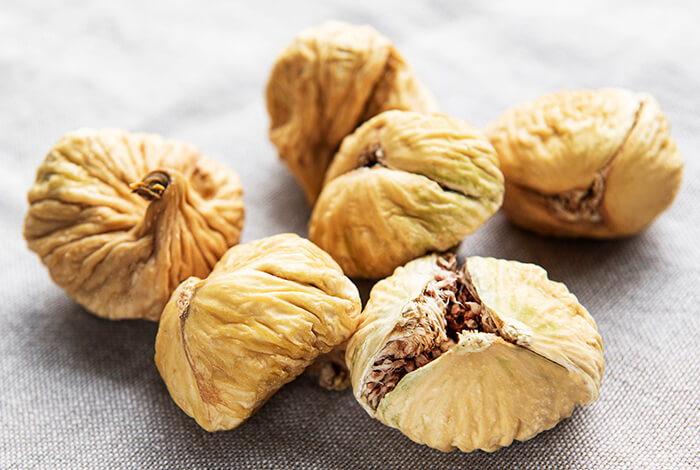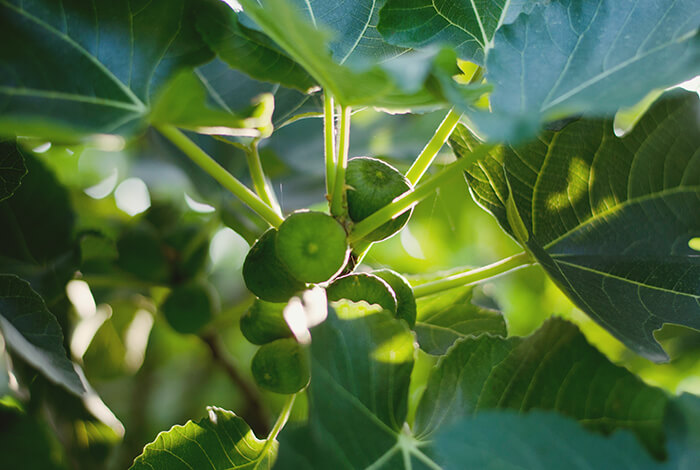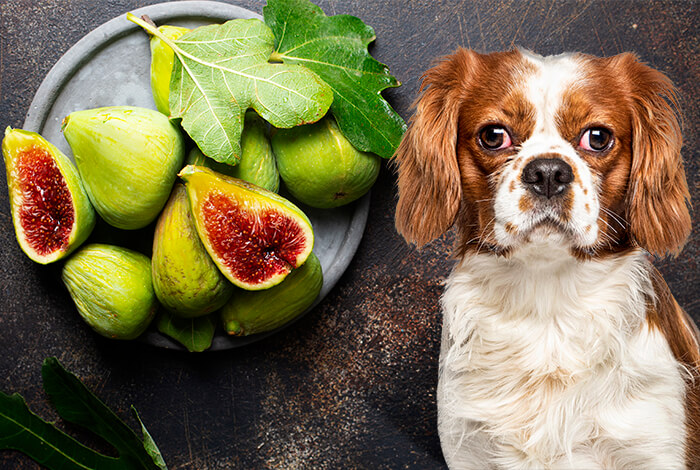Can dogs eat figs? Yes, dogs can eat figs. Apart from their syrupy honey taste, figs also offer many nutritional values and health benefits to dogs. Known as the “fruit of the gods,” this sweet treat is high in fiber, potassium, and magnesium, essential for maintaining a healthy heart, muscles, and digestive tract.
Eating figs may be beneficial to dogs, but they also possess several potential risks. Learn the safest and easiest ways to serve figs to dogs as you read on.
Choosing Figs for Your Dog
 It is best to give fresh and raw figs to your dog. Consider choosing organic figs since they are less exposed to harmful chemicals such as pesticides.
It is best to give fresh and raw figs to your dog. Consider choosing organic figs since they are less exposed to harmful chemicals such as pesticides.
Before feeding your dog figs, wash them thoroughly to get rid of dirt and chemical residue. Cut them up into small pieces to prevent your dog from choking. You may mix fig pieces with his dog food or give them to him as a treat.
Figs do not last long at room temperature, so keep them refrigerated if you do not intend to serve them right away.
Apart from fresh figs, can dogs eat dried figs or baked figs? Dried and baked figs are extremely high in sugar. Both are not toxic to dogs, but they are unhealthy options.
Dogs consuming these in large amounts will risk developing diabetes and obesity. If you treat your dog with baked or dry figs, be sure to serve them in small amounts.
What about processed fig snacks? Can dogs eat Fig Newtons? Avoid sharing fig-flavored food products with your dog. These snacks often contain high levels of sugar and preservatives, which can be life-threatening for him.
For instance, Fig Newtons contain large concentrations of fructose corn syrup. This snack also makes use of partially hydrogenated cottonseed oil. Excessive amounts of this ingredient can cause gossypol poisoning in dogs.
Fig Newtons also contain artificial flavorings such as sulfur dioxide and sodium benzoate, which are bad for your dog’s health.
Benefits of Figs for Dogs
 Fig fruits are good for your dog since he can obtain several essential nutrients from these fruits. Some of these nutrients include:
Fig fruits are good for your dog since he can obtain several essential nutrients from these fruits. Some of these nutrients include:
Potassium
Figs are rich in potassium. Potassium promotes proper blood pressure regulation and a healthy cardiovascular system in dogs. This makes the fruit a good option for dogs with hypertension.
Natural Sugar
 Figs are a great source of natural sugar too. They are made up of 55% natural sugar, making them the sweetest of all fruits. Natural sugar is known as a great energy booster for dogs.
Figs are a great source of natural sugar too. They are made up of 55% natural sugar, making them the sweetest of all fruits. Natural sugar is known as a great energy booster for dogs.
Note that this is entirely different from refined sugar found in processed food. Natural sugar slowly releases energy over time and provides your dog more energy for longer periods.
Fiber
Did you know that 3 large figs that weigh about 2 ounces contain 5.5 grams of dietary fiber? Fig offers more fiber than 1 cup of oatmeal.
Digestive fiber is beneficial to overweight and obese dogs since it aids in weight loss. Adding figs to your dog’s diet will encourage him to eat less but still feel full.
Other Nutrients
Calcium, magnesium, and sterols can be found in figs too. Calcium supports teeth and bone growth, muscle repair and development, and nerve transmission.
Magnesium keeps your dog’s muscles healthy and resilient. Meanwhile, sterols are fundamental in fighting off canine autoimmune diseases.
When Are Figs Bad for Dogs?
 Giving your dog too many figs could result in vomiting, stomach upset, diarrhea, inflammation, and other problems in the digestive system. These are caused by the fruit’s high natural sugar and fiber content.
Giving your dog too many figs could result in vomiting, stomach upset, diarrhea, inflammation, and other problems in the digestive system. These are caused by the fruit’s high natural sugar and fiber content.
Overfeeding your dog with figs can lead to serious health problems, especially for an extended period. Chronic inflammation can cause pancreatitis, arthritis, and dermatitis. Excessive sugar consumption also places your dog in danger of developing diabetes.
Figs can also cause allergies to some dogs. Ficusin and ficain are two enzymes in the fruit that may trigger allergic reactions. Vomiting, sneezing, coughing, wheezing, and rashes around the mouth are the primary symptoms of fig allergy.
If your dog exhibits these signs, stop giving him the fruit and take him immediately to the vet for medical attention.
How Many Figs Should Dogs Eat?
 Watch out how much fig your dog eats, especially if he has a sweet tooth. The recommended serving for medium- to large-size dogs is 2 figs per week. For small breeds, 1 fig per week will do.
Watch out how much fig your dog eats, especially if he has a sweet tooth. The recommended serving for medium- to large-size dogs is 2 figs per week. For small breeds, 1 fig per week will do.
Be careful not to go overboard when feeding figs to Fido, or else he may suffer from several side effects, including flatulence, bloat, and diarrhea. Begin introducing the fruit to your pooch in small amounts.
If digestive problems do not occur, you can gradually increase the quantity. However, do not go beyond the maximum recommended serving.
Before feeding your dog figs, make sure that you have consulted the vet. They need to ensure that the fruit has the right nutritional value your pooch needs.
If their verdict is to avoid giving figs to him, do not worry. You can work with them to find other healthy fruits for your furry pal.
Watch Out for Fig Trees
 Fig fruits are safe for dogs, but it is the opposite case when it comes to fig trees. Their leaves, branches, and stems contain a sap that has potent concentrations of ficusin and ficain, which are toxic to dogs.
Fig fruits are safe for dogs, but it is the opposite case when it comes to fig trees. Their leaves, branches, and stems contain a sap that has potent concentrations of ficusin and ficain, which are toxic to dogs.
If you have a fig plant in your backyard, make sure that it is securely fenced. Also, make sure to keep an eye on your dog while he is in the backyard to prevent accidents from happening.
Here are the most common signs of fig poisoning in dogs:
- Diarrhea
- Vomiting
- Drooling
- Rashes around the mouth
- Watery eyes
- Irritated skin
If your dog is showing these symptoms, seek veterinary help immediately.
During the treatment, the vet may induce vomiting on your dog to get rid of the toxins in his body. Then activated charcoal will be administered to keep his body from absorbing the remaining toxins.
Your pooch may need a bath and eyewash too. This will remove the residues of the fig sap on his mouth and eyes.
The vet will apply topical ointment afterward to reduce the irritation on your dog’s skin. They will also give him intravenous fluids to keep him hydrated and encourage urination.

